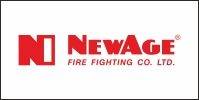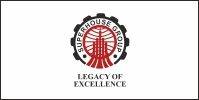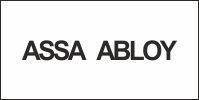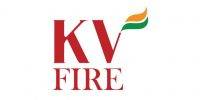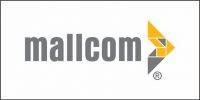 The goals of fire prevention programs are to prevent loss of life, property damage, and downtime in use of a building. Fires often cause disruption of business activities, loss of business documents, loss of employee work hours, and liability claims resulting from the spread of fire to adjacent properties. Depending on the construction type or contents of the building and the occupancy type and number of occupants, fire prevention features should provide life-safety and property protection or a combination of both.
The goals of fire prevention programs are to prevent loss of life, property damage, and downtime in use of a building. Fires often cause disruption of business activities, loss of business documents, loss of employee work hours, and liability claims resulting from the spread of fire to adjacent properties. Depending on the construction type or contents of the building and the occupancy type and number of occupants, fire prevention features should provide life-safety and property protection or a combination of both.
A fire prevention program can reduce or eliminate the occurrence of fires by training occupants in fire safety, as well as proper maintenance and care of fire protection and life-safety systems, and by controlling potential ignition sources and fuels. A successful fire prevention program is part of the day-to-day operations of every property. Fire prevention is the responsibility of the owner, the manager, and all occupants of a property. It consists of three primary parts:
- Precautions against fire
- Fire-safety education
- Fire protection and life-safety systems
- Precautions against Fire
Traditional fire prevention programs emphasize precautions designed to keep a fire from starting. The property owner or manager should take steps to:
- Control smoking materials and open flames
- Store flammable and combustible liquids safely
- Use electrical equipment correctly
- Perform general housekeeping tasks on a regular basis
- Purchase fire-safe furnishings, decorations, and interior finishes
- Maintain commercial kitchen exhaust systems
- Control special hazards
Fire-Safety Education
Fire prevention relies on people knowing about fire and the effects of fire. Through educational programs, fires and extinguishing methods are identified and discussed. In addition, building occupants are taught to identify and correct fire hazards, plan building and office evacuation routes, choose and use fire extinguishers, and inspect for fire. A manager is responsible for the continuous and repeated education necessary to develop fire prevention habits among building occupants.
Boosting tenant participation in a fire prevention program is critical. Tenants may be encouraged to become involved through motivators such as:
- Involving local fire officials
- Making tenants aware of recent fires that indicate the need to participate
- Holding drawings for prizes for participants
- Selecting a favorable season for evacuation drills
- Providing refreshments
Fire Protection and Life-Safety Systems
Fire protection and life-safety systems include building exit systems, fire alarm systems, and fire suppression systems. Fire prevention codes specify proper maintenance and repair of these systems. Fire protection involves the installation and use of structural and operational systems to minimize the impact of fire on people and property.
Fire protection systems can be classified into two main categories:
- Passive fire protection
- Active fire protection
Passive Fire Protection
Passive fire protection is the use of building components to control or limit fire. Walls, floors, and ceilings can be designed and constructed to resist passage of fire and smoke. For example, a wall with a one-hour fire resistance rating is built as a barrier to resist the passage of a standard fire for one hour. These barriers are arranged to provide compartmentation: they subdivide the building into compartments to reduce the size and spread of a standard fire.
The most important thing to remember about compartmentation is that it does not work if the wall, floor, or ceiling has an unprotected opening in it through which fire and smoke can spread. Penetrations through fire-rated barriers must be kept to a minimum. If a penetration is necessary, the penetration must be protected according to code to maintain the fire rating of the barrier. Too often, fire-rated barriers are rendered useless because piping, telephone lines, or data transmission cables are installed through them.
Another, less obvious, example of a useless fire barrier is a fire door that is blocked open or otherwise made inoperative. A fire door is a door designed to resist the passage of fire. If it is blocked open or inoperable, the fire-rated wall in which the door is located no longer serves as an effective fire barrier.
Older high-rise office buildings typically relied on compartmentation as a primary fire protection system. However, over time, fire-rated compartmentation is often penetrated to accommodate new office technologies and space requirements.
Walls and Doors: The typical compartmentation system uses fire-rated walls and associated fire doors to contain fire. Fire-rated walls are intended to prevent the horizontal passage of fire. The fire rating of the wall may vary from 20 minutes to 4 hours and may be calculated for a fire exposure on one or both sides of the wall. The doors in these walls also have a fire rating, which is usually lower than the fire rating of the wall. The theory behind the lower rating is that the building contents, which serve as the fuel, are not located in front of the door. Therefore, the fire exposure to the door can be less than that experienced by the wall.
The following types of walls have a fire resistance rating:
Fire wall/fire partition: A fire-resistance-rated wall that extends continuously from slab to slab, has fire-rated protected openings, and restricts the spread of fire
Party wall: A fire wall on an interior lot line used or adapted for joint service between two buildings
Smoke barrier: A continuous membrane that resists the movement of smoke
Floors and Ceilings: Another form of compartm-entation is a fire-resistant-rated floor and ceiling assembly, which creates a horizontal barrier to prevent the spread of fire from one floor to the next. It may consist of a concrete or protected steel floor slab, a fire-rated ceiling system, or combinations of both. Like fire-rated walls, fire-rated floors and ceilings should have the least number of penetrations possible. If penetrations occur, they must be constructed to the same rating as the floor or ceiling they pass through.
Codes typically contain special provisions to permit large openings from one floor to the next. An intraoffice stair between two floors is a good example; as long as this stair is not part of the building’s exiting system, codes allow it to remain open if it has additional fire protection. An example of such fire protection would be closely spaced automatic sprinklers with a noncombustible, vertical smoke barrier around the opening in the ceiling.
Active Fire Protection
Active fire protection measures are those that take direct physical action to reduce the growth rate of fire or the migration of smoke. Active fire protection systems are most often fire sprinkler and smoke control systems that receive signals, both manual and automatic, to perform their intended function. Fire alarm systems are also part of active fire protection. They usually identify the presence of fire by detecting smoke or heat, and are used for activation of extinguishing systems or the notification of building occupants and the fire department.
Fire sprinkler and other extinguishing systems are intended to extinguish or control the fire. Smoke control systems are typically designed to limit the spread of smoke, which keeps egress routes passable for a given period of time. The fire alarm, through both activation of the fire sprinkler system and manual or automatic detection devices, provides warning to the occupants of the building as well as notification to emergency personnel responding to the alarm.













